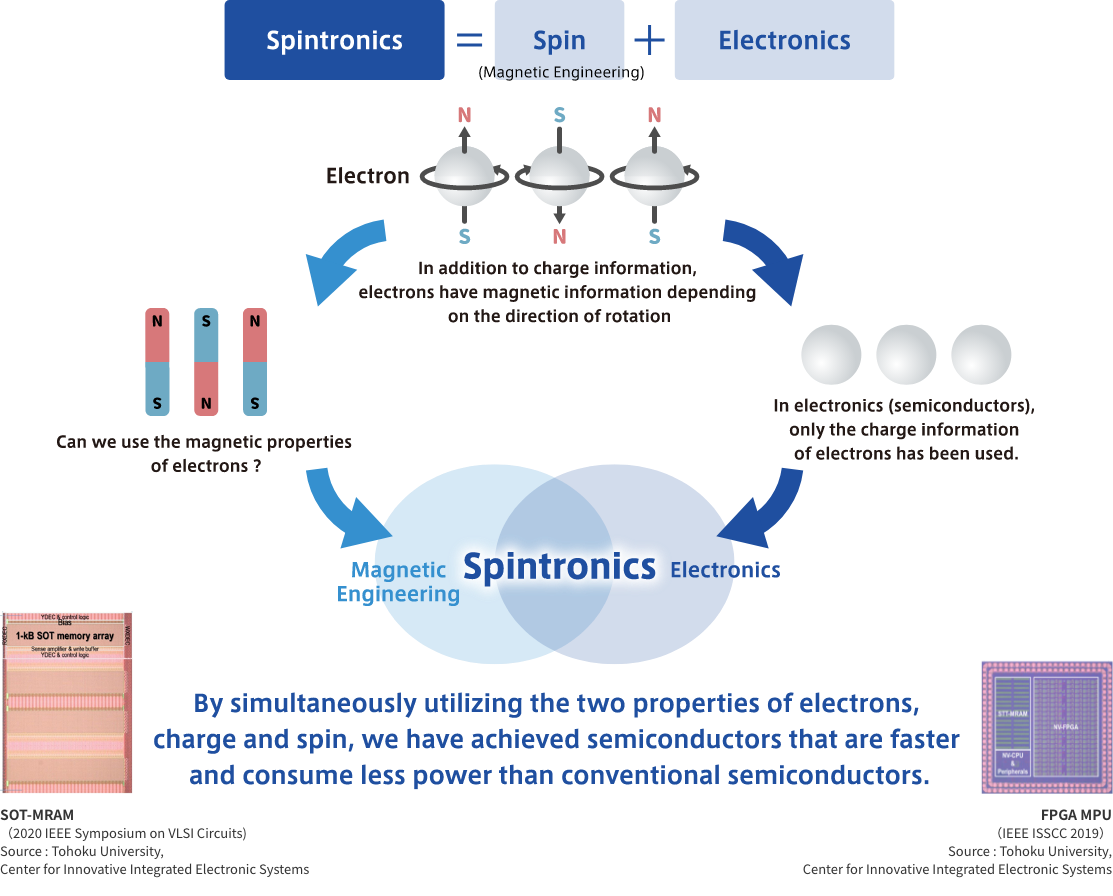Spintronics, a portmanteau of “spin transport electronics,” represents a remarkable advancement in the field of semiconductor technology. By harnessing the intrinsic spin of electrons—an essential quantum mechanical property in addition to their charge—researchers propose that we can exponentially enhance the performance and efficiency of transistors. This burgeoning area of study has the potential to revolutionize not only computing but also a variety of applications including data storage, sensor technology, and quantum computing.
At the core of spintronics lies an intricate interplay between quantum mechanics and materials science. Traditional electronics predominantly rely on the charge of electrons to convey information. However, integrating spin as a mechanism to store and transmit data allows for multi-faceted manipulation of information, promising lower energy consumption and increased speed. The manifestations of spintronics can be effectively categorized into numerous fascinating domains.
1. Fundamentals of Electron Spin
The concept of electron spin may initially appear inaccessible, but it essentially refers to the orientation of an electron’s intrinsic angular momentum. Spin can be thought of as a tiny magnetic moment, akin to a spinning top. Electrons can exist in one of two states, often denoted as “up” or “down,” corresponding to the two possible orientations of their spin. The ability to control and manipulate these spin states is paramount, as it paves the way for novel technological implementations.
2. Spin-Polarized Currents
Spintronics capitalizes on spin-polarized currents, or streams of electrons that predominantly favor one spin orientation. Generating such currents involves sophisticated techniques such as ferromagnetic materials or specialized magnetic fields. When electrons traverse through a material in a controlled manner, the resulting polarization can be harnessed for efficient data processing. This polarization enables the construction of devices that not only store data more densely but also access it much more quickly.
3. Spintronic Devices
Numerous spintronic devices have emerged, some inspired by existing technologies while others are entirely novel. Magnetic tunnel junctions (MTJs) are a prime example. An MTJ consists of two ferromagnetic layers separated by a non-magnetic insulating barrier. The resistance of the junction varies depending on the relative orientations of the magnetizations in the two layers, allowing for the binary representation of data. Another pivotal device is the spin field-effect transistor (Spin-FET), which employs both charge and spin for modulation, showcasing significantly enhanced efficiency compared to its purely charge-based counterparts.
4. Quantum Computing and Spintronics
The interconnection between spintronics and quantum computing is particularly striking. Quantum bits, or qubits, the fundamental units of quantum information, can leverage electron spin states for encoding data. Spin-based qubits have demonstrated remarkable coherence times, essential for the viability of quantum computation. With the advent of spintronics, researchers are exploring the creation of spin qubits that are not only stable but also easily manipulable, setting the stage for a new era of quantum technologies.
5. Material Innovations
The search for materials conducive to spintronic applications is ongoing, with researchers evaluating a plethora of substances. Magnetic semiconductors, topological insulators, and graphene are gaining traction due to their unique properties, such as high spin polarization and low dissipation of energy. Perovskite oxides and transition metal dichalcogenides are also being explored for their remarkable spin properties and their potential integration into existing semiconductor fabrication techniques.
6. Challenges in Spintronics
Despite the burgeoning potential of spintronics, several formidable challenges persist. The stability of spin states at ambient temperatures remains a critical concern, as thermal fluctuations can easily disrupt spin coherence. Additionally, developing scalable techniques for fabricating spintronic devices poses intricate engineering challenges. Overcoming these hurdles necessitates interdisciplinary collaboration among physicists, material scientists, and electrical engineers, fostering innovative solutions.
7. Future Prospects: From Theory to Practice
The future landscape of spintronics appears promising. As the understanding of materials and spin dynamics deepens, pathways will become clearer. Prototypes of spintronic devices are already under experimentation, and with continued investment, these concepts may soon transition from research laboratories to consumer technology. The promise of ultra-low power electronic devices, memory systems that far exceed the capabilities of today’s flash memory, and advanced sensors for diverse applications suggests a revolution on the horizon.
Conclusion
The advent of spintronics heralds a transformative shift in the domain of electronics, offering a tantalizing glimpse into a future where computing is not only faster but also more energy-efficient. By leveraging the quantum properties of electron spin, this novel field will undoubtedly redefine the limitations of current semiconductor technologies, paving the way for revolutionary advancements across various sectors. Continued research and development in this domain will likely yield profound implications, not only enhancing device performance but also spurring innovation across the broader landscape of electronic technology.












